
Urban Gardening: Where Can I Garden in the City?
Urban gardening has really become a buzzword in recent times. But what does it actually mean? And where can I garden in the city? In this article, I want to give you an overview of the various forms of urban gardening and provide a few ideas on where you can start gardening yourself.
This Article Contains:
- What Is Urban Gardening?
- Urban Gardening on the Balcony: Your Balcony Garden
- Suitable Plants for Your Balcony Garden
- Urban Gardening Without a Balcony: Gardening on the Windowsill
- The Windowsill Garden: Little Space, Little Light
- Community Garden: Better Together Than Alone
- Allotment Garden: The Classic
- Guerrilla Gardening: Gardening as a Form of Action
- Frequently Asked Questions About Urban Gardening
Quick Overview
Urban Gardening: Ideas for Gardening in the City
- Balcony gardening in pots, balcony boxes or raised beds
- Gardening without a balcony on the windowsill, e.g. growing your own sprouts
- Community garden
- Allotment garden
- Guerrilla gardening
What Is Urban Gardening?
Urban gardening means gardening in the city. Many forms of gardening can be summarized under the term "urban gardening". Not everyone who lives in the city has a garden or much space for gardening. That's why urban gardening also includes other forms of gardening such as balcony gardens, community gardens, raised beds or vertical gardening. Find out below what options you have for gardening in the city.
Urban Gardening on the Balcony: Your Balcony Garden
If you think about gardening in the city, you will probably come across the classic balcony or roof terrace garden pretty quickly. Here, gardening takes place in pots and balcony boxes, tubs and raised beds. You can find Tips on the Ideal Pot Size for Various Crops Such as Tomatoes and Peppers in this article.
As an enthusiastic balcony gardener, I can tell you that there's something special about being in the "garden" in two steps from the bed. One big advantage is that the balcony garden is as close to home as you can get. This makes it very easy to look after the plants properly and give them enough attention. What's more, you can get from the kitchen to the "living pantry" super quickly to cook the fruits of your labor as needed. It really is amazing how many vegetables can be grown in a small space. So if you have a balcony or roof terrace and haven't gardened there yet, you should start as soon as possible - it's worth it!
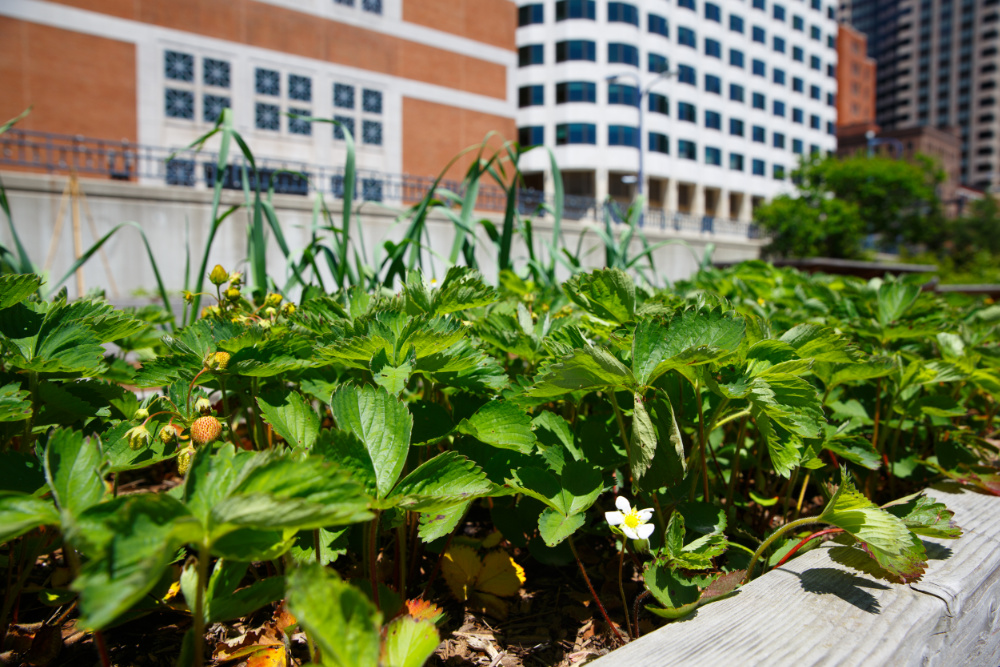
Suitable Plants for Your Balcony Garden
Balconies and - to an even greater extent - roof terraces are sometimes the most extreme locations for plants. On south-facing balconies, it often gets tropically hot in summer and therefore also very dry. On my balcony, for example, it was regularly over 40 °C/104 °F this summer. Potted plants dry out particularly quickly because they cannot draw on the water reserves in the soil. If a balcony faces north or is located in an inner courtyard, it can quickly become very gloomy and many plants no longer have enough light to grow. You can find More Ideas for Your Balcony Garden here.
Plants for Sunny and Shady Balconies
Sun-loving plants are - logically - recommended for south-facing balconies. All nightshade plants (tomatoes, peppers, chillies, aubergines etc.) thrive here. Cucumbers and beans also feel at home in the warmth and offer a pleasant side effect: if you guide them up strings or poles, they offer you both privacy and protection from the sun. To give your plants a small buffer, you should give them the largest possible pots and use a substrate with expanded clay or perlite added. These materials have a high water retention capacity and also store nutrients.
If your balcony is rather shady, you can grow lettuce, spinach or chard there. But radishes and carrots also thrive in the shade. With chard, radishes and carrots, you should make sure that the pot is deep enough - at least 30 cm/11,8 in. You can also grow herbs on a shady balcony to spice up your range of herbs. Most herbs are fairly undemanding when it comes to location, so basil, parsley, chives and many other herbs also thrive relatively well in the shade.
Urban Gardening Without a Balcony: Gardening on the Windowsill
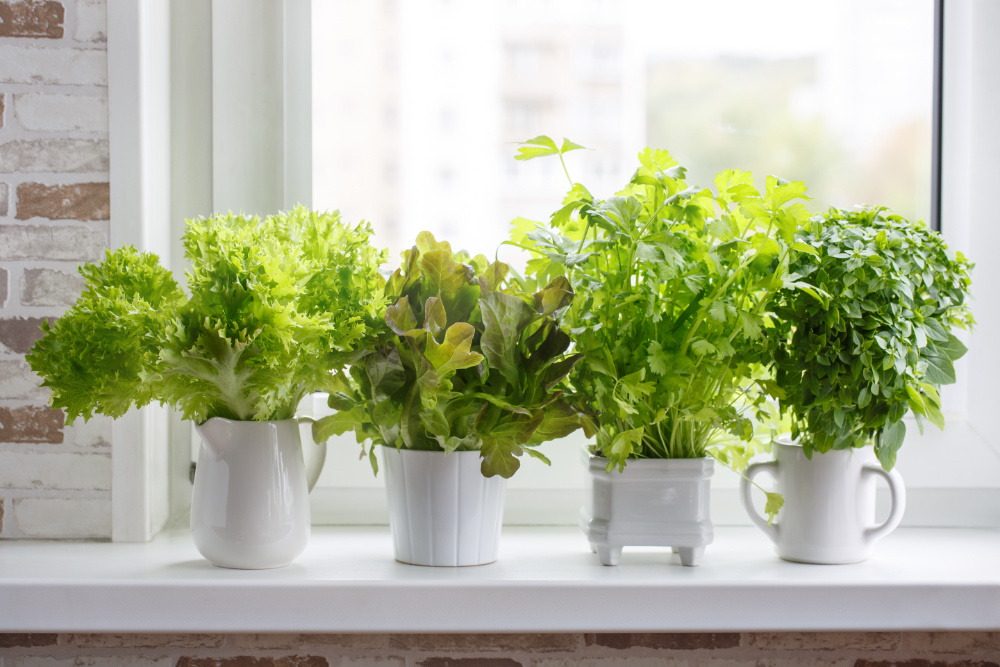
There is one catch with the balcony garden: you need a balcony. Unfortunately, this blessing is only granted to a fraction of city dwellers. But don't worry - even without a balcony, you can live out your botanical fantasies in a variety of ways. You can do a lot with a bright windowsill. There's definitely room for at least a few kitchen herbs or a small chilli plant.
The Windowsill Garden: Little Space, Little Light
On your windowsill, you are mainly limited by space. Large pots usually don't fit here and the plants themselves shouldn't be too sprawling. Salads, herbs or microgreens are the obvious choice here. But small chilli bushes also thrive on the windowsill if they get enough light. Another option for greening your windowsill is the so-called "regrowing" of vegetable waste. This involves planting the "waste" from vegetables that are able to sprout again and can therefore be harvested even more often. Spring onions, for example, but also some lettuces are very suitable for this.
Growing Your Own Sprouts
A hot tip for windowsill gardeners: inside are "microgreens" or sprouts. Seeds of radishes or cabbage, for example, are germinated and then harvested after a few days. The sprouts are great as a topping for salads or like cress on a sandwich. We Explain How You Can Grow Radish Sprouts Yourself in This Article.
Plant Lamps for Overwintering
If you also want to garden indoors on a large scale or want to save your little treasures from the balcony during the cold season, it may be worth buying a plant light. LED lamps are now available at relatively low prices that give your plants life and consume surprisingly little electricity. Nevertheless, it is still most environmentally friendly outside in the sun, so consider whether artificial light is really necessary for your purposes or whether there is another alternative. You Can Read More About “Plant Lamps for Growing or Overwintering Plants” Here.
Community Garden: Better Together Than Alone
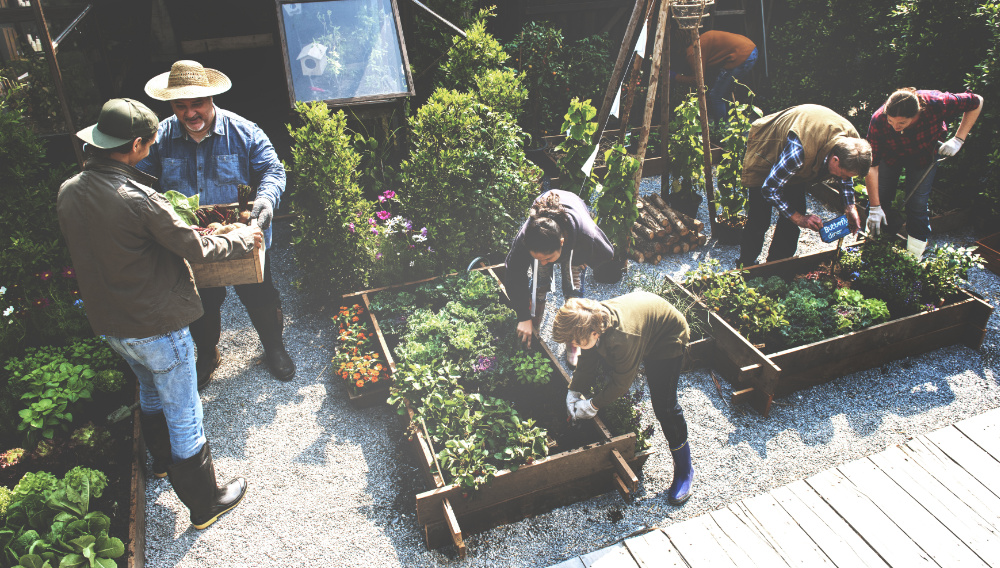
The forms of urban gardening described so far work well at home. But as with so many things, gardening is much more fun when you do it together. That's why there is now a rapidly growing number of urban community gardens in most cities. Many of these projects occupy brownfield sites and otherwise unused land, transforming these places into oases of green in the midst of all the gray.
In a community garden, not only can you meet nice people who share your hobby, but you can also benefit from the experience of others and learn much faster than if you try to figure it all out on your own. To find a community garden near you, the internet is your friend: many of the projects can be found on Facebook or Instagram or even have their own website.

Would You Like to Chat to Other Gardeners?
To exchange ideas with other gardeners and benefit from their experiences, you can visit our Fryd community. Maybe you'll find an opportunity to garden with others in your city.
Become Part of the Community NowAllotment Garden: The Classic
If you had to sort the different forms of gardening on a timeline, the modern community garden would probably be the successor to the classic allotment garden. But even today there are still a large number of allotment garden associations where you can rent a small plot of land, often for very little money. In many cities there are allotment garden sites that are much more centrally located than you might think. And an allotment garden is the ultimate ticket to really getting into the gardening business. However, you are also making a big commitment. Especially in summer, the garden may require daily maintenance, depending on the plants. You should think about whether you are prepared to make this commitment beforehand.
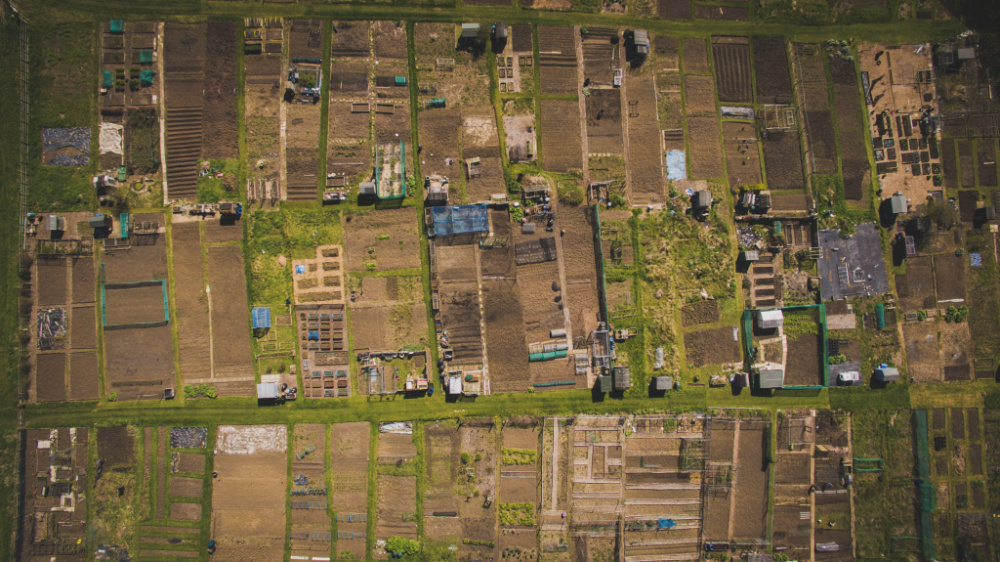
Guerrilla Gardening: Gardening as a Form of Action
Last but not least, we come to a somewhat more "radical" form of gardening. You might be asking yourself: radical gardening, how is that supposed to work? But so-called "guerrilla gardening" has exactly this claim: gardening everywhere where the ground is not sealed by asphalt or concrete. The classic example of guerrilla gardening are seed bombs. Here, seeds are mixed with soil and clay and formed into balls, which can then be distributed on grass verges and tree grates. Some guerrilla gardeners go a little further, for example in Berlin. In some neighborhoods there, you can find entire vegetable gardens on the sidewalks under trees.
We think guerrilla gardening is a great thing. After all, why should all green spaces consist only of grass when useful plants could also grow there? However, there is a catch: some city councils don't like it when you turn their meticulously landscaped green spaces into wild permaculture experiments. If in doubt, the public order office may intervene. So think beforehand about how far you want to go with your actionism and perhaps simply ask the city or district administration whether there are areas where guerrilla gardening is okay. In Stuttgart, for example, there is now a special office for urban garden projects at the city that you can contact with such requests.

Even though gardening has long since arrived in city centers these days, we still think it could be a lot greener: Everything could be much greener. Because nothing is as depressing as the dreary surroundings of a gray concrete desert. So if you haven't already done so, choose your form of play and start gardening! You can't lose in the process. And if you need help, there's always Fryd.
If you have any questions or comments, please write to us at magazin@fryd.app. Would you like to receive helpful gardening tips all year round and plan your own beds optimally? Then register here or download the Fryd app for Android or iOS.
Fryd - Your digital bed planner
Jonas
Current Topics in the Community
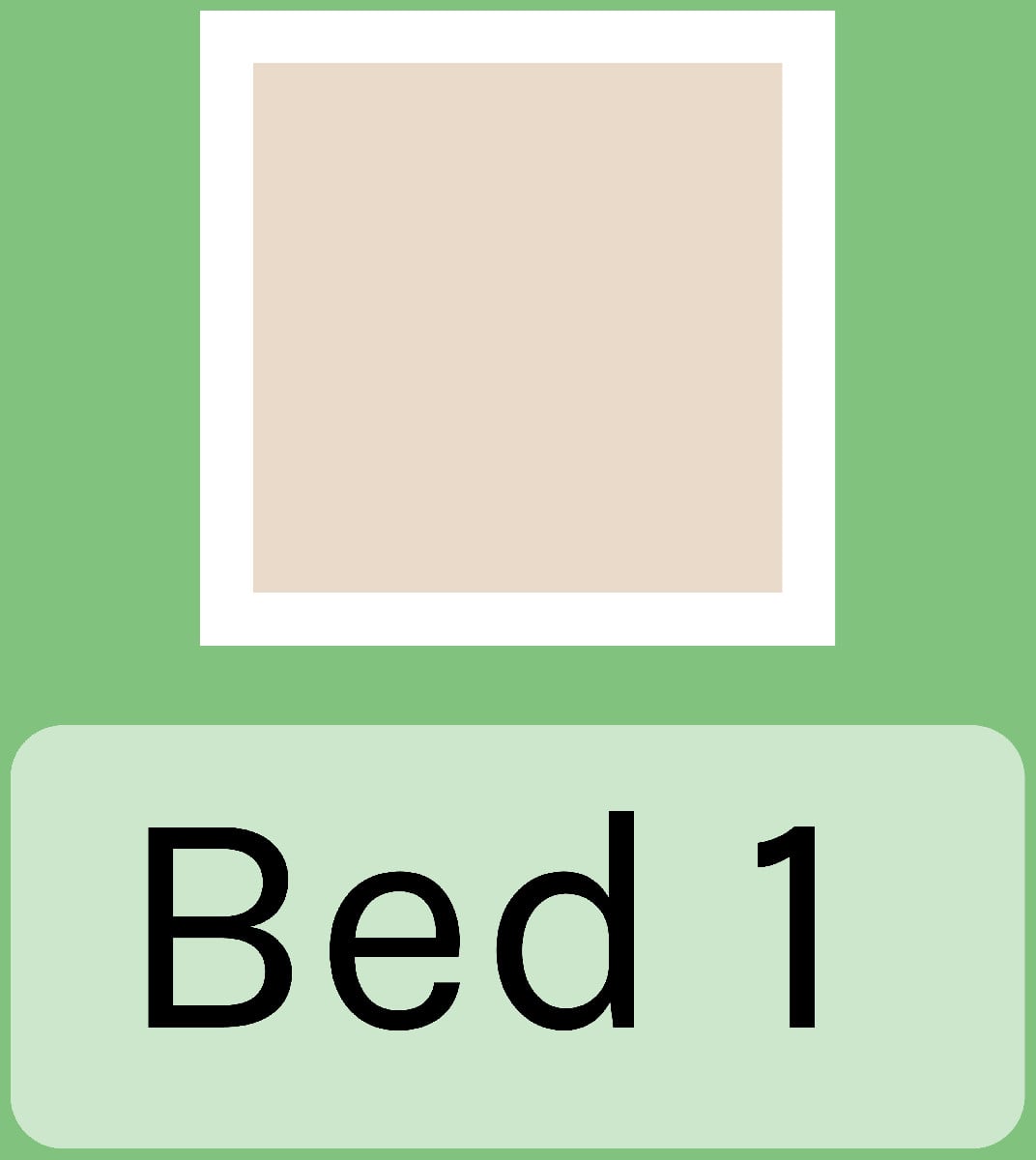
@Testi
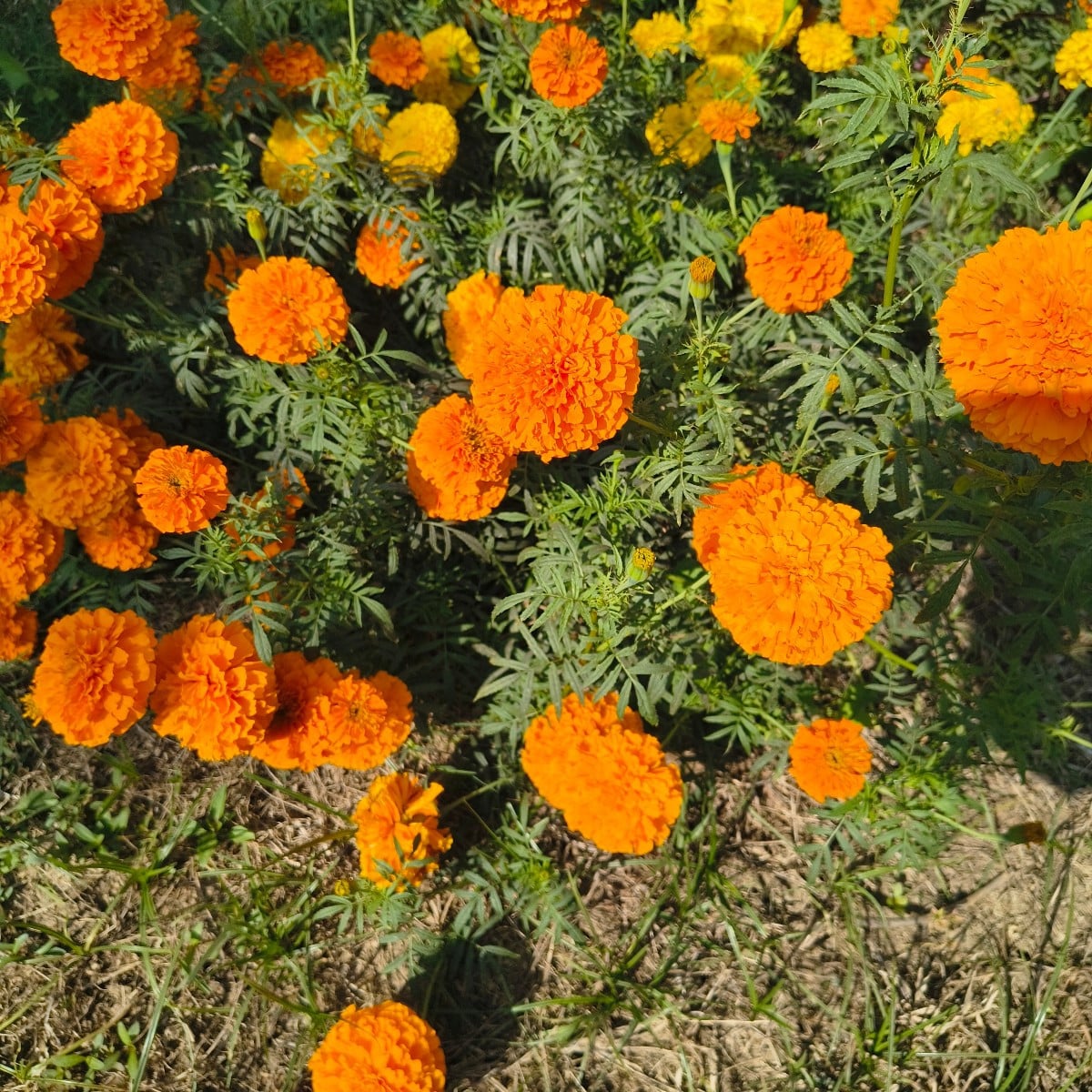
Liked 3 times
@🌱_Testing_💫_October,_2025 #paiduser #newpost #testfryd
Show 1 answer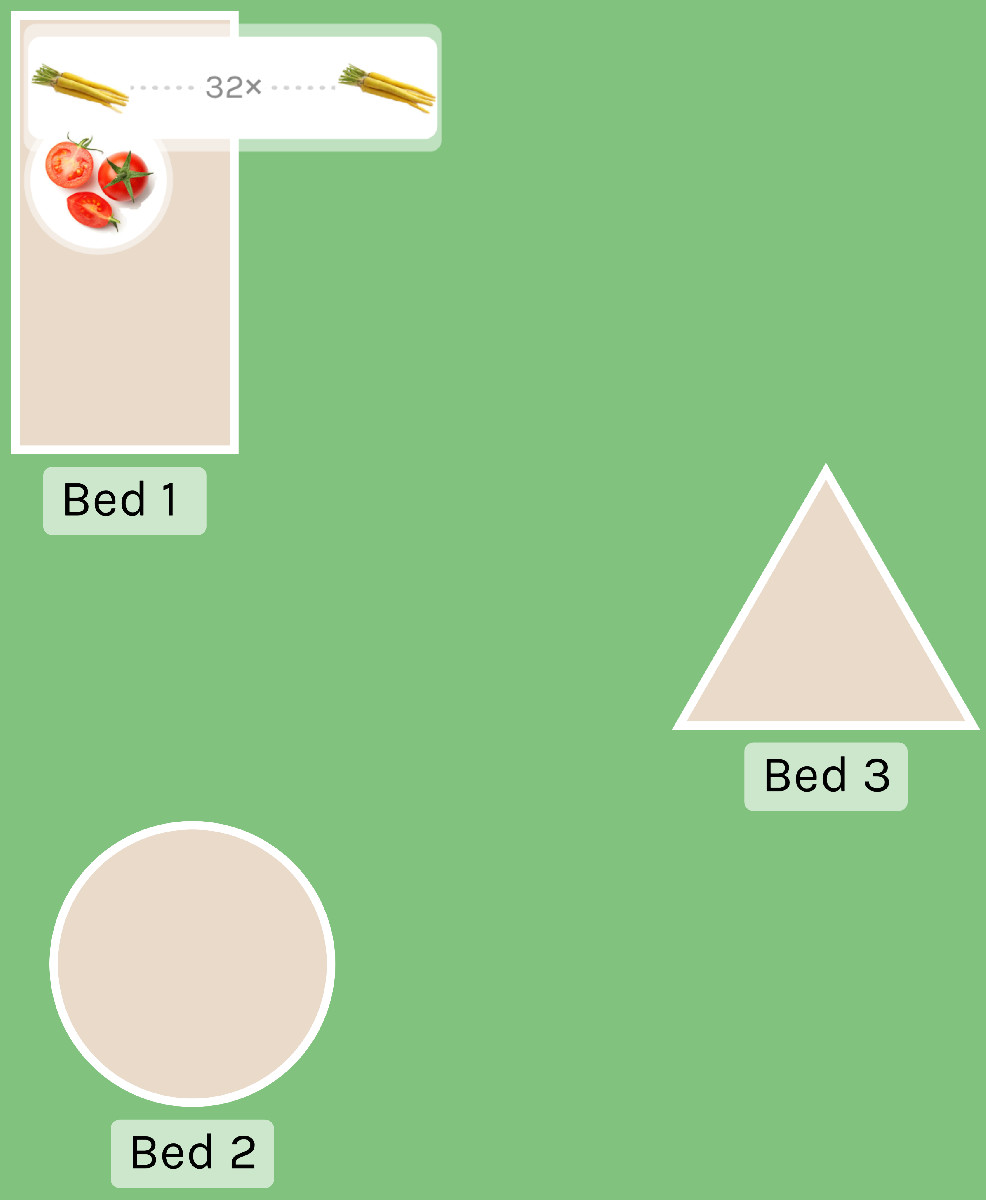
Liked 2 times
Show 2 answersPopular Articles

Companion Plants for Carrots: What (Not) to Plant With Carrots

Companion Plants for Celery : What (Not) to Plant With Celery?

Strawberry Types: List of Best Strawberry Varieties

Companion Planting With Strawberries: Companion Plants and Planting Plan

Basil Varieties & Types at a Glance

What to Plant With Cabbage: Good and Bad Companion Plants

Fertilizing Strawberries: Home Remedies & Natural Fertilizers at a Glance

Growing Sweet Potatoes: Tips on Cultivation & Companion Plants

Companion Plants for Kitchen Herbs: Chives, Parsley & Co

What Herbs Can Be Planted Together?
FAQ
Urban gardening encompasses various forms of gardening in the city, including balcony gardens, community gardens, raised beds and vertical gardening. So you can garden in the city even without a large garden.
How can I garden in the city without a balcony?
You can also garden without a balcony, e.g. on the windowsill. At least kitchen herbs or small plants such as chilies can be grown there. Alternatively, there are usually allotment or community gardens.
Community gardens are (urban) projects where people garden together on wasteland or unused land, share experiences and learn from each other.
Allotment gardens are classic allotment gardens that can often be leased for little money and make it possible to garden extensively in the city.
Guerrilla gardening refers to gardening on unused land without official permission. This involves the use of seed bombs, for example, with the aim of making the city greener.